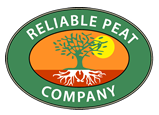Fall is the perfect time to give your landscape a make-over by adding a fresh layer of mulch. Not only will it beautify your home, it will add valuable nutrients for your plants.
The National Bark & Soil Producers Association explains the difference between wood and bark mulch
 Any mulch with “bark” in the name must be at least 85 percent bark of that named tree. A “mulch” material, on the other hand, need be only 70 percent of the named material, and it may be either bark or wood. In both cases, the remaining 15 or 30 percent can be just about anything, but it is usually wood.
Any mulch with “bark” in the name must be at least 85 percent bark of that named tree. A “mulch” material, on the other hand, need be only 70 percent of the named material, and it may be either bark or wood. In both cases, the remaining 15 or 30 percent can be just about anything, but it is usually wood.
The primary difference is how long the mulch will last before breaking down. “Wood breaks down quicker and is more susceptible to insect damage and discoloring than bark,” explains Bob LaGasse, executive director of the NBSPA.
The National Gardening Association suggests using 3 to 4 inches of mulch each season. Around soft stemmed perennials and annuals use a 2 to 3 inch layer. Though a bark mulch can give a vegetable garden a revised look, but fine particle mulch decomposes faster and adds nutrients to the soil.
Areas prone to flooding, slopes, and pathways can benefit from stones or a larger bark mulch. They don’t wash away as easily as shredded mulch and won’t have to be applied as often.
How much mulch will you need?
For a 100 square foot area
for mulch 4 inches deep, you will need around 34 cubic feet,
for mulch 3 inches deep will need 25 cubic feet
for mulch 2 inches deep will need 17 cubic feet.
1 cubic yard equals 27 cubic feet, that’s about how much fits into the bed of a small pick up truck.
The mulch calculator from The National Garden Association is a great to determine how much soil you will need.
If you have any questions, please contact Reliable Peat. Our professionals are here to help with all your landscaping needs.



